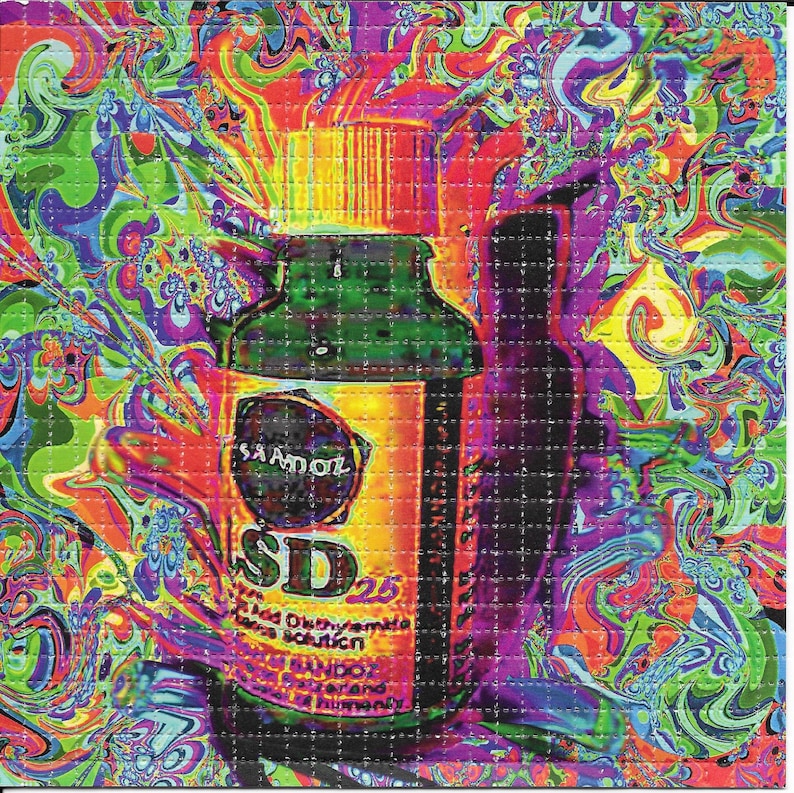
Hofmann wrote in 1983, “The horror softened and gave way to a feeling of good fortune and gratitude.” It was at this point in Hofmann’s notes that he was able to enjoy his psychedelic experience as the intensity began to fade and beautiful images, shapes, and colors began to flood his mind behind his closed eyes.

The Light at the End of the TunnelĪs the hallucinogenic experience raged on, Hofmann’s doctor came by to check on his vitals, giving him a clear pass with a notation regarding his dilated eyes and sent him off to bed to rest. Experiences with his neighbor, who came by periodically to check on Hofmann’s well-being, began to take the form of a nightmare, as faces and voices distorted into dark and twisted psychedelic sounds and images. As the day went on and his experience grew darker, he began to believe he was possessed by a demonic entity. Hofmann’s psychedelic trip became more intense as he arrived home. Low and behold, the drug’s powerful effects only increased during his bicycle journey that day. Unable to take a car due to wartime restrictions, Hofmann and his lab assistant took bikes instead. However, it soon became apparent that he had taken far too much of the hallucinogen and decided that it was best to leave his lab and head back home. that Hofmann ingested his first intentional dose of LSD. When used to remove ink from writings, the writing may appear in reverse on the surface of the blotting paper, a phenomenon which has been used as a plot device in a number of detective stories, such as in the Sherlock Holmes story The Adventure of the Missing Three-Quarter.Albert Hofmann in 1993. Plain white LSD blotter without artwork is commonly referred to as WoW (White on White) and is usually not perforated but rather gridded with a pen and sometimes laid on commonly obtained watercolor paper. Blotter as a delivery method allows for easy dosing of potent substances and easy sublingual administration of drugs which has made it increasingly popular as a preparation for other potent drugs including 25I-NBOMe and alprazolam. Most blotter art designs have grid lines as part of the design to either aid in perforation or to be left as a cutting grid. It is best known for its use during the counterculture of the 1960s, and its resulting prohibition gave it a mostly negative reputation. The artwork is printed onto blotter paper and then sometimes perforated into tiny squares or “tabs” which can be torn or cut apart. LSD Acid Blotter, or lysergic acid diethylamide, is a psychedelic drug derived from a chemical in rye fungus. Vanity blotter is blotter art that hasn’t been exposed to LSD and is usually sold as a collectible, although inevitably much of this art ends up in illegal distribution. A liquid solution of the drug is applied to the blotting paper, which commonly is perforated into individual doses and artfully decorated with what is known as blotter art.

Drugs Drugs active in microgram range, most notably LSD, are commonly distributed on blotting paper. These strips are used similarly to litmus strips, however filter paper is usually used for litmus strips, generally to allow for the property of diffusion.

Small squares of blotting paper attached to disposable plastic strips are impregnated with pH sensitive compounds usually extracted from lichens, especially Roccella tinctoria. Blotting paper is also used in pool/spa maintenance to measure pH balance. Applications Chemical analyses Blotting paper is used in chemical analyses as stationary phase in thin-layer chromatography.
#Lsd blotter art skin
Blotting paper has also been sold as a cosmetic to aid in the removal of skin oils and makeup. Blotting paper referred to as bibulous paper is mainly used in microscopy to remove excess liquids from the slide before viewing. It is used to absorb an excess of liquid substances (such as ink or oil) from the surface of writing paper or objects. Blotting paper, sometimes called bibulous paper, is a highly absorbent type of paper or other material. Sensations and feelings change much more dramatically than the physical signs. It is most often sold on blotter paper and less commonly as tablets, in a watery solution or in. The physical effects include dilated pupils, higher body temperature, increased heart rate and blood pressure, sweating, loss of appetite, sleeplessness, dry mouth and tremors. LSD is typically either swallowed or held under the tongue. Legality Effects of lsd The effects of LSD Blotters are unpredictable, and occur based on factors such as on the amount taken, the user’s personality, mood, expectations and the surroundings in which the drug is used.

While LSD is primarily used recreationally, people use LSD for several reasons: augmenting creativity, treating anxiety and clinical depression, and assisting psychotherapy. Description LSD blotter for sale What Does LSD Do? LSD-25, more commonly known as simply LSD, is a powerful psychedelic drug first synthesized by Albert Hofmann in 1938.


 0 kommentar(er)
0 kommentar(er)
